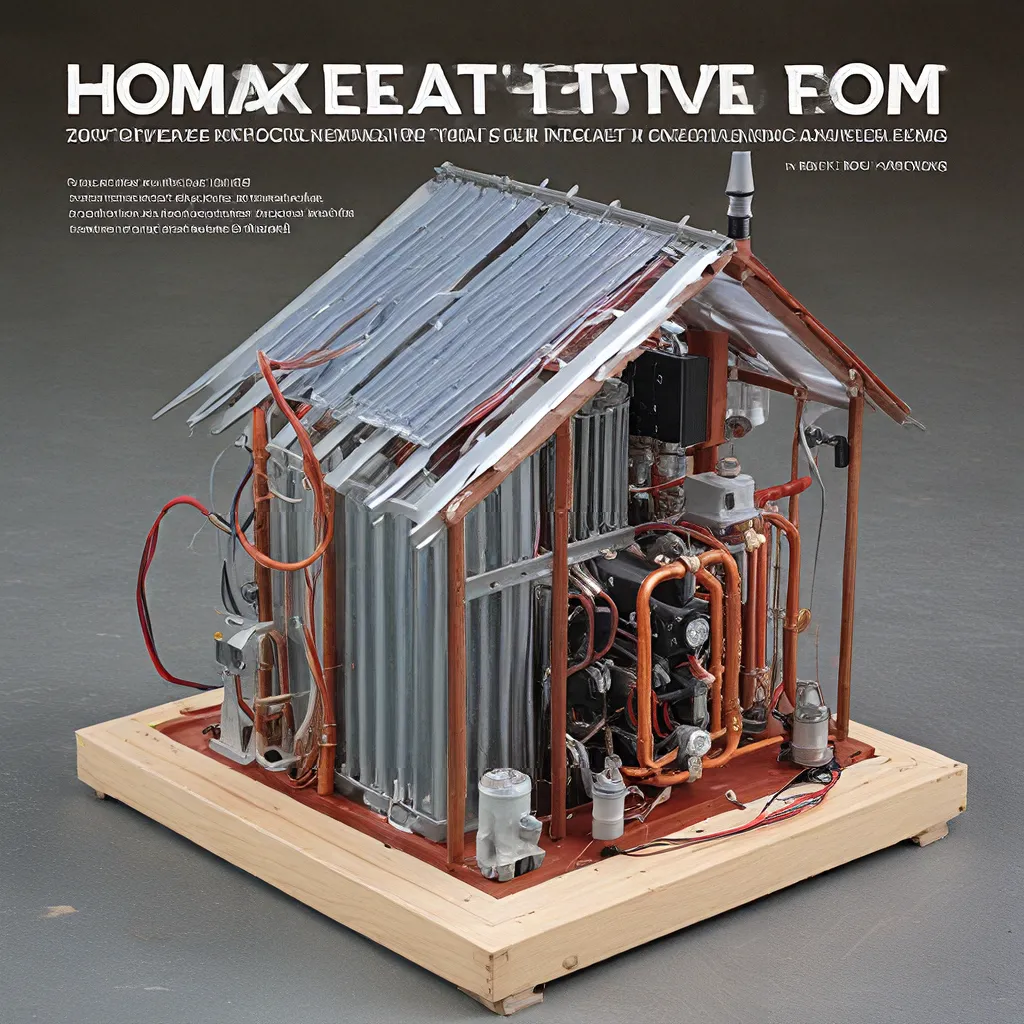
Alright, folks, gather ’round – it’s time to get our hands dirty and explore the fascinating world of harnessing renewable thermal power! I’m your guide, and I’m about to take you on a journey that’ll have you rethinking the way you heat your home.
The Sizzling Secrets of Thermal Energy
Let’s start with a little background, shall we? Thermal energy is all around us, just waiting to be tapped into. It’s the energy that’s constantly being exchanged between objects with different temperatures – think of the warmth radiating from the sun or the heat that builds up in your attic on a summer day.
Now, you might be wondering, “But how can I use that to heat my home?” Great question! The key is to find ways to capture and harness that thermal energy, and that’s where the real fun begins.
DIY Heat Harnessing Projects
Solar Thermal Collectors
One of the most promising DIY projects for harnessing renewable thermal power is building your own solar thermal collector. These handy devices use the sun’s rays to heat up a fluid, which can then be used to warm your home or even heat your water.
Plug ‘n Save Energy Products has a great guide on how to build your own solar thermal collector using simple, inexpensive materials. Trust me, it’s easier than you might think! All you need is some plywood, black paint, copper tubing, and a touch of elbow grease.
Once you’ve got your collector set up, you can use it to heat your home in a variety of ways. You could, for example, run the hot fluid through a heat exchanger to warm the air in your house. Or, you could use it to heat up your water supply, reducing your reliance on energy-guzzling water heaters.
Thermal Mass Storage
Another cool (or should I say, hot?) DIY project is building a thermal mass storage system. This involves using materials like concrete, bricks, or even water to store thermal energy that can be released later when you need it.
Imagine this: you’ve got a big ol’ pile of bricks in your basement, soaking up the sun’s warmth during the day. Then, when the temperature drops at night, the bricks slowly release that stored heat, keeping your home cozy and comfortable. It’s like your own personal thermal battery!
This video from the DIY Renewable Energy channel has some great tips on how to build your own thermal mass storage system. Just be sure to do your research and plan carefully – you don’t want your homemade heat battery to overheat and explode!
Geothermal Heat Pumps
Now, I know what you’re thinking: “Geothermal heat pumps? Isn’t that some high-tech, expensive stuff?” Well, my friends, you’d be surprised! With a little elbow grease and some DIY know-how, you can actually build your own geothermal heat pump system.
The basic idea is to use the relatively constant temperature of the earth just a few feet below the surface to heat and cool your home. You dig a series of pipes or loops, fill them with a special fluid, and then use a heat pump to transfer that thermal energy into your living space.
As this Reddit thread explains, the key to harnessing geothermal power is all about understanding entropy and the flow of energy. By carefully managing the thermal gradients in your system, you can create a highly efficient and sustainable heating and cooling solution.
Sure, it’s a bit more complex than the other projects we’ve covered, but with the right guidance and a little patience, you can totally pull it off. Check out this video for a step-by-step walkthrough on how to build your own DIY geothermal heat pump.
Homemade Heat: The Renewable Thermal Revolution
Well, there you have it, folks – a whole host of DIY projects that’ll have you harnessing the power of renewable thermal energy in no time. From solar thermal collectors to geothermal heat pumps, the possibilities are endless.
So, what are you waiting for? Grab your toolbox, get your DIY hat on, and let’s start building a more sustainable, energy-efficient future – one homemade heat project at a time. Who knows, maybe you’ll even stumble upon the next big breakthrough in renewable thermal technology.
The future is ours to shape, my friends, so let’s get to work and harness the power of homemade heat!